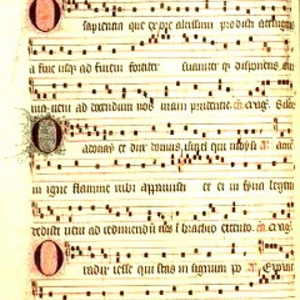Today the final part in the brush up your rubrics for Advent series, aimed at helping you to get ready for the complexities of the Advent Office.
So far I have covered:
Matins
At Matins, the Ordinary of the season includes:
So far I have covered:
- The antiphons for the psalms (Pt 1);
- The antiphons for the psalms during Advent (Pt 2);
- The canticle antiphons and collects throughout the year (Pt 3);
- The canticle antiphons and collects during Advent (Pt 4).
Today I want to focus on the parts of the Office that immediately follow the psalmody (other than the canticle and its antiphon at Lauds and Vespers and the closing prayers which we have already covered).
Lauds and Vespers - all change!
The most important thing to keep in mind when saying Lauds and Vespers during Advent is that all of the parts of the Office after the psalmody - that is the chapter, short responsory, hymn and versicle - change during Advent.
That means you have to ignore what appears in the psalter section of your Diurnal or breviary and instead use the texts found under the 'Ordinary of Advent' (Diurnal page 9* onwards; Antiphonale Monasticum page 181 onwards).
The table below summarises the impact of Advent on these two hours.
|
|
Lauds and Vespers during the
week
|
I&II Vespers of Sunday,
Sunday Lauds
|
|
Opening prayers
|
As throughout the year
|
|
|
Antiphons for the psalms
|
As throughout the year until December 17, then of the week day in the
period
|
Of the Sunday of Advent
|
|
Psalms
|
Of the day
|
|
|
Chapter, responsory, hymn, versicle
|
Ordinary of Advent
|
Of the Advent Sunday (mostly from the Ordinary)
|
|
Canticle antiphon
|
Of the Advent day or date
|
|
|
Canticle
|
As throughout the year
|
|
|
Closing prayers
|
Collect of the Advent week or day
|
|
The hymns (and hymn tones) of the season
Accordingly, this is the week to brush up (or learn) the hymns of the season, namely:
- Conditor alme siderum at Vespers;
- Vox clara ecce intonat at Lauds; and
- Verbum supernum prodiens at Matins.
(Note the recordings I've linked to use slightly different texts to the monastic ones in some cases).
In the case of Prime, Terce to None and Compline the texts of the hymns do not change. If you are singing them though, there are special chant tones for the season:
- the chant tone for the hymn, Te Lucis ante Terminum (Compline) can be found on page 183 of the Antiphonale Monasticum; and
- the chant tone for Iam lucis orto at Prime is also used at Terce to None, and can be found in the Antiphonale Monasticum on page 185.
Chapter and versicles for Terce to None
The chapter and versicles of the little hours are all of Advent, but because they are the same throughout Advent they can be found both in the Ordinary of Advent section and in the psalter section.
The table below summarises the impact of Advent on Prime, Compline and Terce to None.
|
PART OF THE HOUR
|
COMPLINE
|
PRIME
|
TERCE TO NONE
|
|
|
|
|
|
|
Opening prayers/section
|
As for throughout the year |
|
|
|
Hymn
|
Text as for throughout the year; chant tone of Advent, AM 183
|
Text as for throughout the year; chant tone of Advent, AM 185
|
|
|
Antiphon and psalms
|
Unchanged (no antiphon)
|
Antiphon of the week or day of Advent with psalms of the day of the week
|
Antiphon of the week or day of Advent with psalms of day
|
|
Chapter/short reading and versicle
|
As for throughout the year
|
For Advent, as noted in the psalter section
|
|
|
Closing prayers
|
As for throughout the year
|
Collect of the Advent week or day
|
|
- the invitatory antiphon (which changes from the Third Sunday of Advent);
- the hymn;
- antiphons on Sundays;
- versicles at the end of Nocturn I; and
- chapter.


